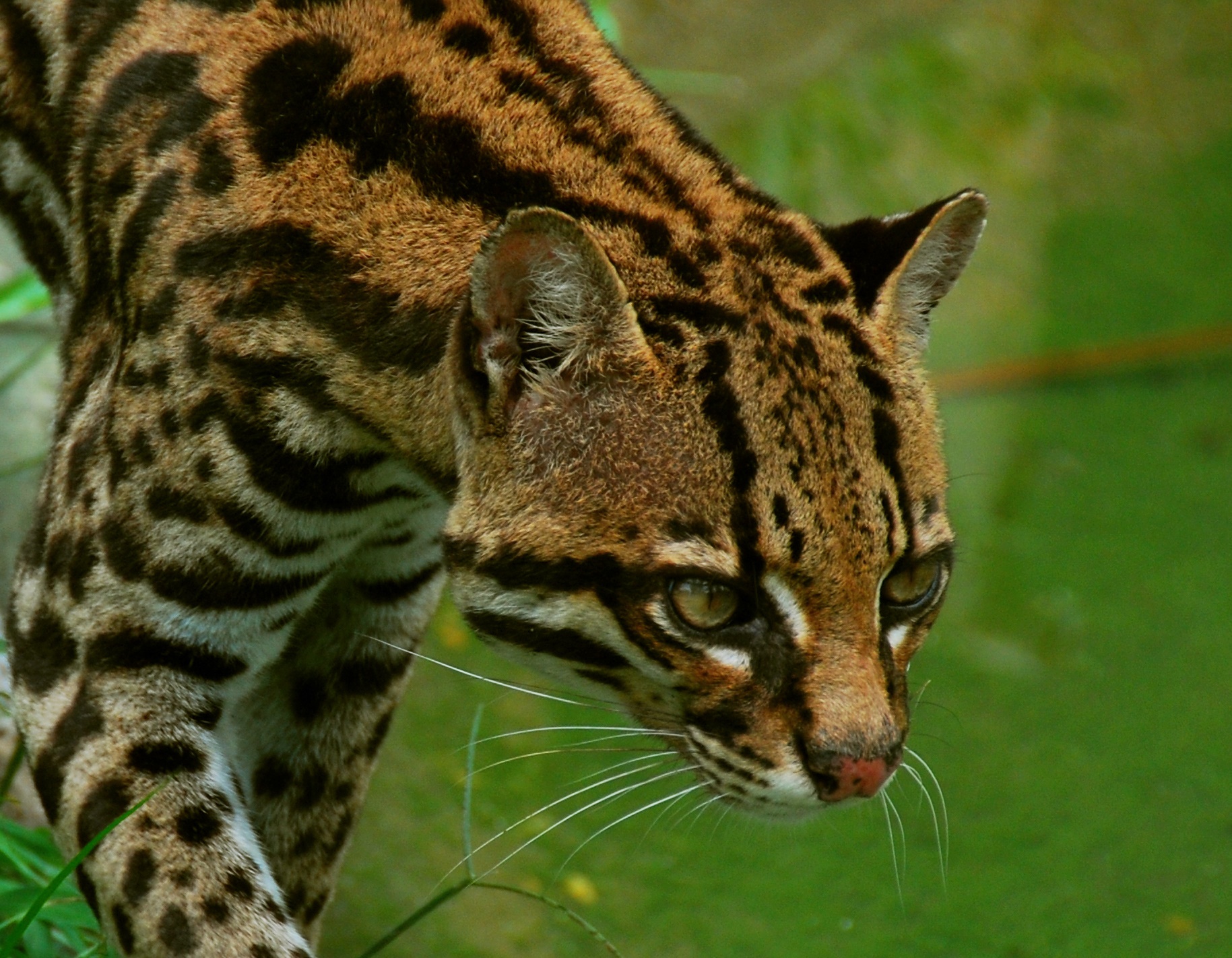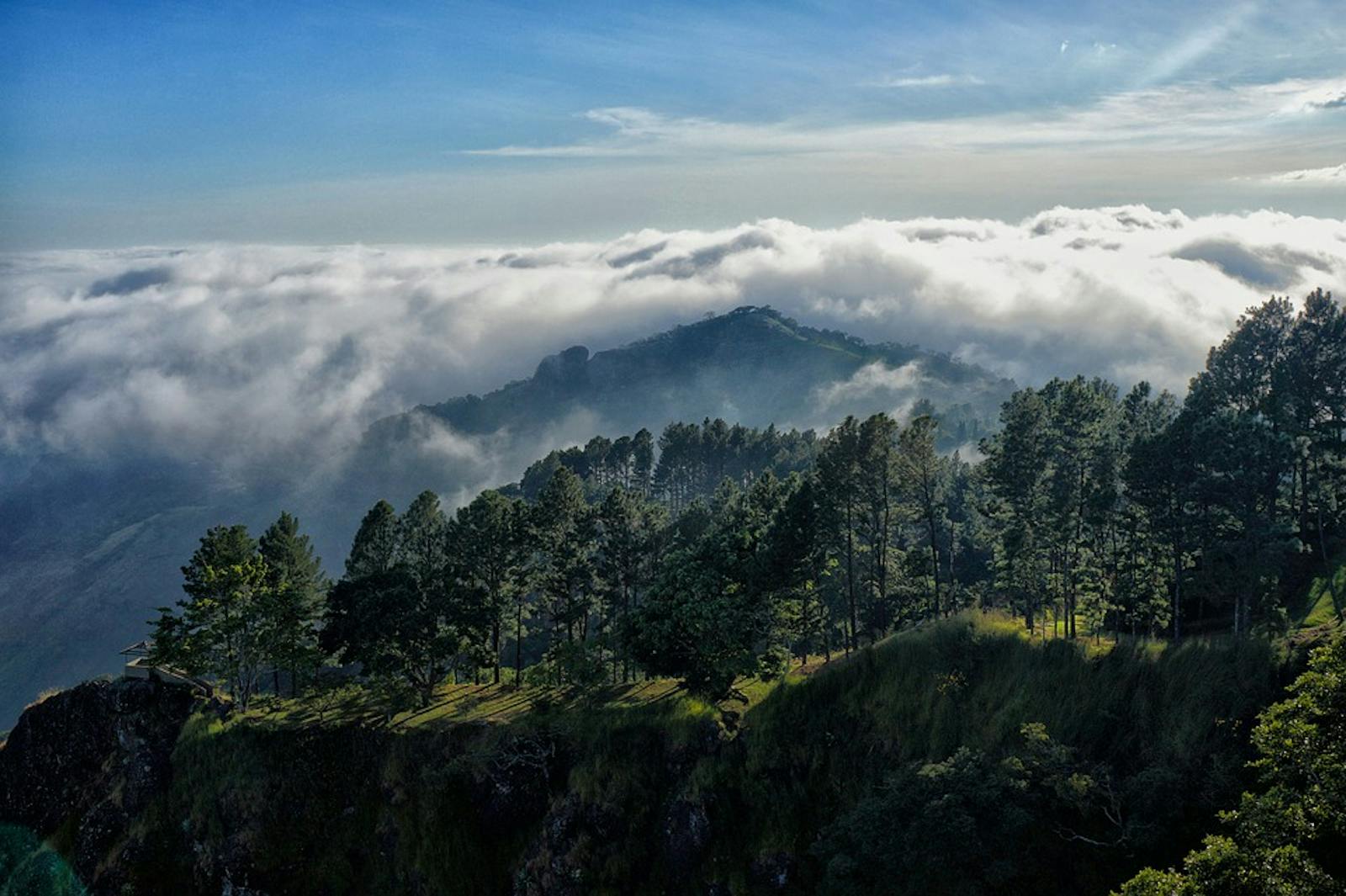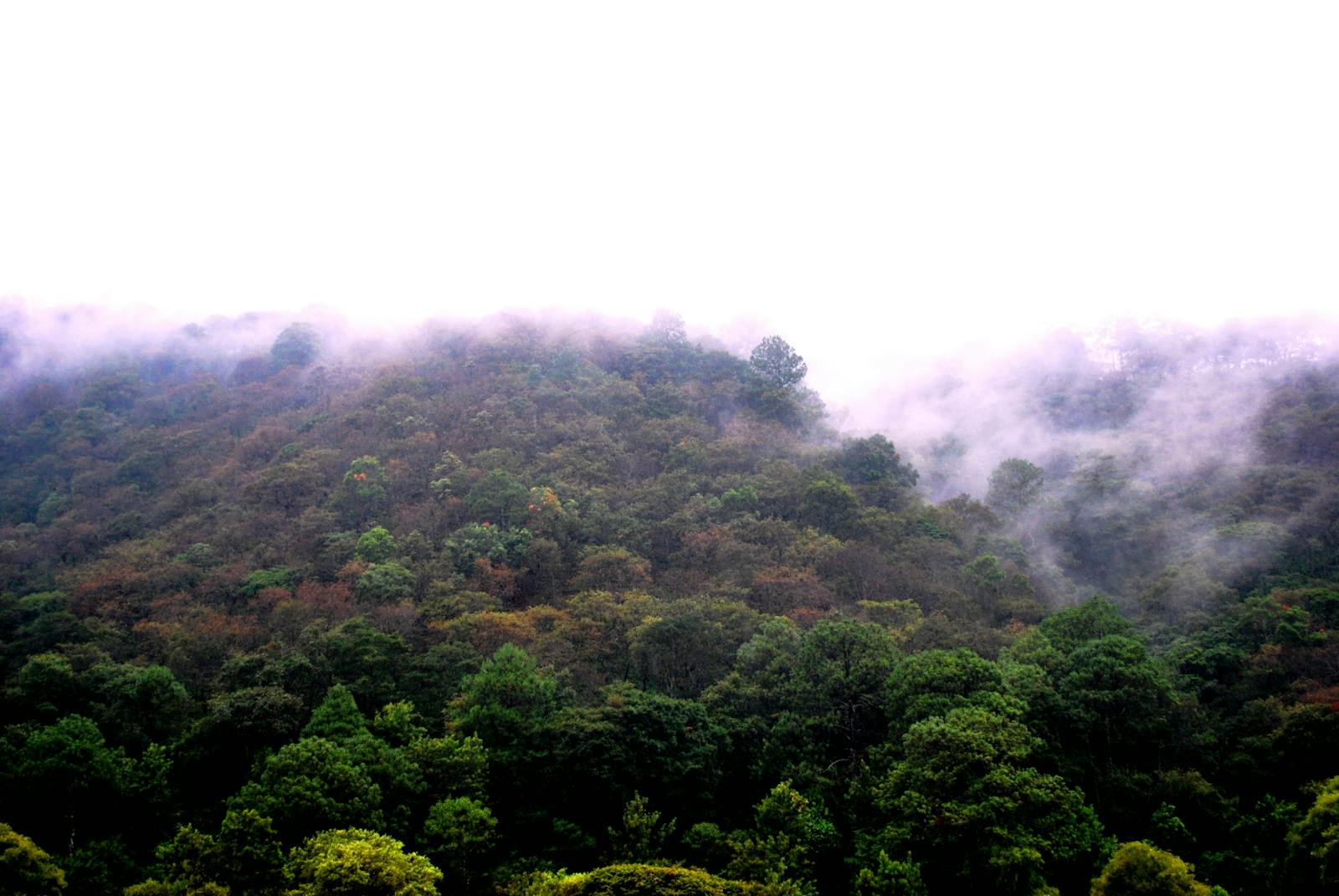Central American Pine-Oak Forests
The ecoregion’s land area is provided in units of 1,000 hectares. The protection goal is the Global Safety Net (GSN1) area for the given ecoregion. The protection level indicates the percentage of the GSN goal that is currently protected on a scale of 0-10.
Bioregion: Central American Mixed Forests (NT25)
Realm: Central America
Ecoregion Size (1000 ha):
11,159
Ecoregion ID:
553
Conservation Target:
34%
Protection Level:
3
States: Honduras, Guatemala, Mexico, El Salvador, Nicaragua
The Central American Pine-Oak Forests ecoregion supports a rich assortment of conifer species and spans across the mid elevations northern Central America. These premontane forests extend from highland cloud forests to lowland rainforest and support the colourful resplendent quetzal.
These magnificent birds live in holes in tree trunks, where they escape the rain and mist and also where they lay their eggs. In the breeding season the males adorn long tail feathers, sometimes several feel long, which they use to display to females. Their beauty and nesting behaviors have made them a “must see” for bird-watchers, who would travel from all over the world to see them in their native habitats.
.jpg)
The flagship species of the Central American Pine-Oak Forests ecoregion is the resplendent quetzal. Image credit: Courtesy of Tom Benson
This ecoregion incorporates the central Mexican state of Chiapas, southern Guatemala, most of Honduras and El Salvador, and small areas of west central Nicaragua. Also encompassed in this ecoregion are the Sierra Madre de Chiapas and, various mountain ranges with complex topography.
Dominated by a rich assemblage of pines and oaks, it marks the southern limit of boreal floristic influence in the New World. These mixed forests are dominated by species of pine, oak, birch, and alder trees. In the Olancho area of Honduras, the trees reach exceptionally large stature, while the pine-oak forests in El Salvador have almost entirely been cleared.
This ecoregion is rich in fauna with more than 150 mammals present, some of which are restricted to the Sierra of Chiapas mountain. Some of the mammals found in this ecoregion are the jaguar, puma, ocelots, tapir, greater grison, tayra, Central American spider monkey, and mantled howler monkey. There are approximately 16 species of endemic amphibians and 24 species of endemic reptiles in the Sierra de Chiapas alone, including Neotropical whop snake, Celaque mushroomtoungue salamander, and an endangered species of spikethumb frog.
The highlands of northern Central America are an endemic bird area and are the wintering grounds for migratory warblers such as the threatened golden-cheeked warbler and the azure-rumped tanager. Additionally, some endemic flora in the Sierra of Chiapas includes: weeping fig, tailflower, cardboard palm, and common oak.

Ocelot. Image credit: Creative Commons
The status of the pine-oak forests of Central America varies by country and region. The human populations of Guatemala and El Salvador are concentrated within this ecoregion and exert strong negative impacts on the remaining fragments. Considerable intact habitat remains in Honduras, although there are expanding human impacts, including extensive logging for agricultural purposes such as cattle ranching or for firewood. This ecoregion includes several protected areas including Montecristo National Park as the last remaining forest in El Salvador.
Human populations of Central America continue to grow at high rates and are expected to double within the next thirty years. Therefore, threats against this ecoregion can only be expected to increase. As demand for wood increases the pressure on remaining forest in Honduras is growing at an exponential rate. A few protected areas in the ecoregion, such as Sierra de las Minas Biosphere Reserve in Guatemala and Cusuco and Agalto National Parks in Honduras are designated to protect cloud forests, but only include a small extent of pine-oak forests.
Due to these threats, the conservation priority for the next decade are to: 1) expand cloud forest protected areas to include adjacent down-slope habitats; 2) strengthen and expand the protection of pine-oak forests in eastern Honduras; 3) and manage and regulate logging activities for sustainability within this ecoregions.
Citations
1. Powell, G., S. Palminteri, C. Locklin. 2018. Central America: Southern Mexico, southern Guatemala, into Honduras, El Salvador, and Nicaragua. https://www.worldwildlife.org/ecoregions/nt0303. 8 August 2018
2. Dinerstein, E., D. Olson, D. Graham, A. Webster, S. Primm, M. Bookbinder, and G. Ledec. 1995. A conservation assessment of the terrestrial ecoregions of Latin America and the Caribbean. World Wildlife Fund-US. Washington DC.
3. WWF and IUCN. (1994-1997). Centres of plant diversity. A guide and strategy for their conservation. Volume 3: The Americas. IUCN Publications Unit. United Kingdom.




